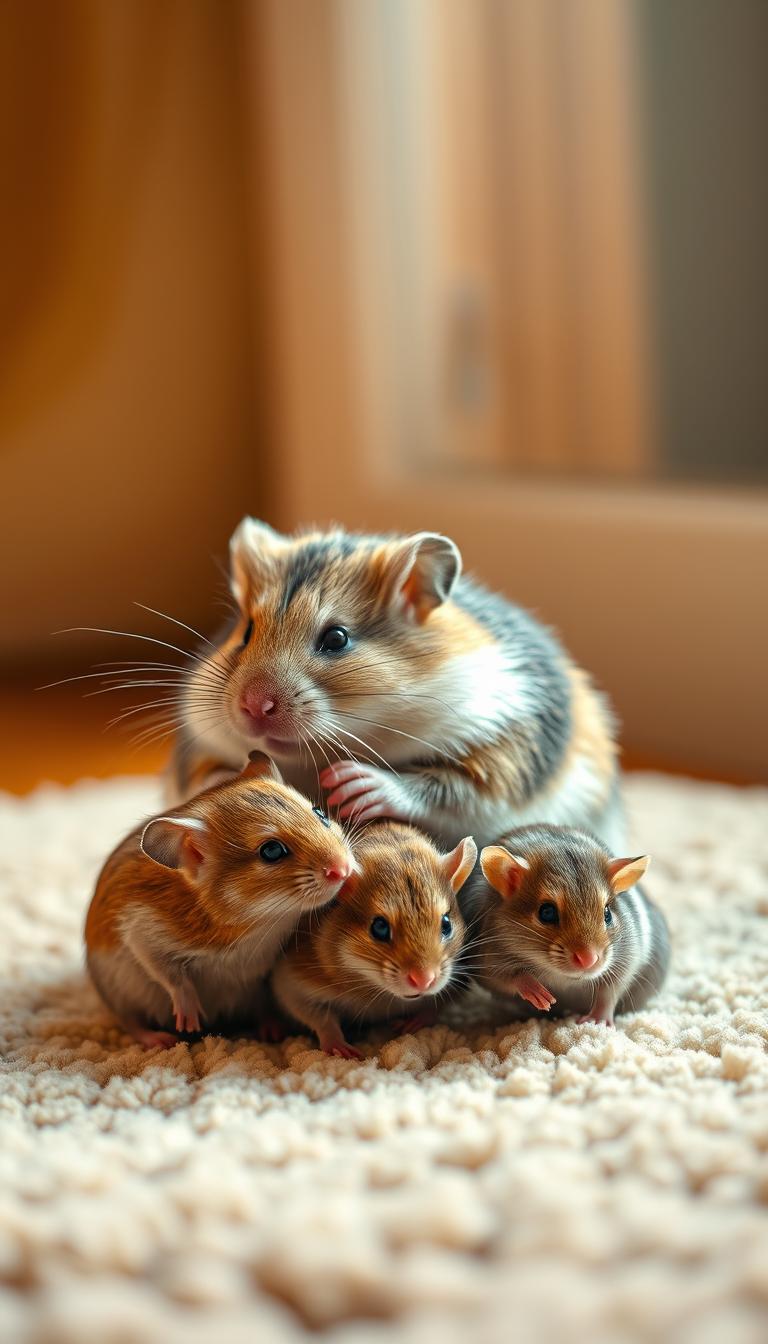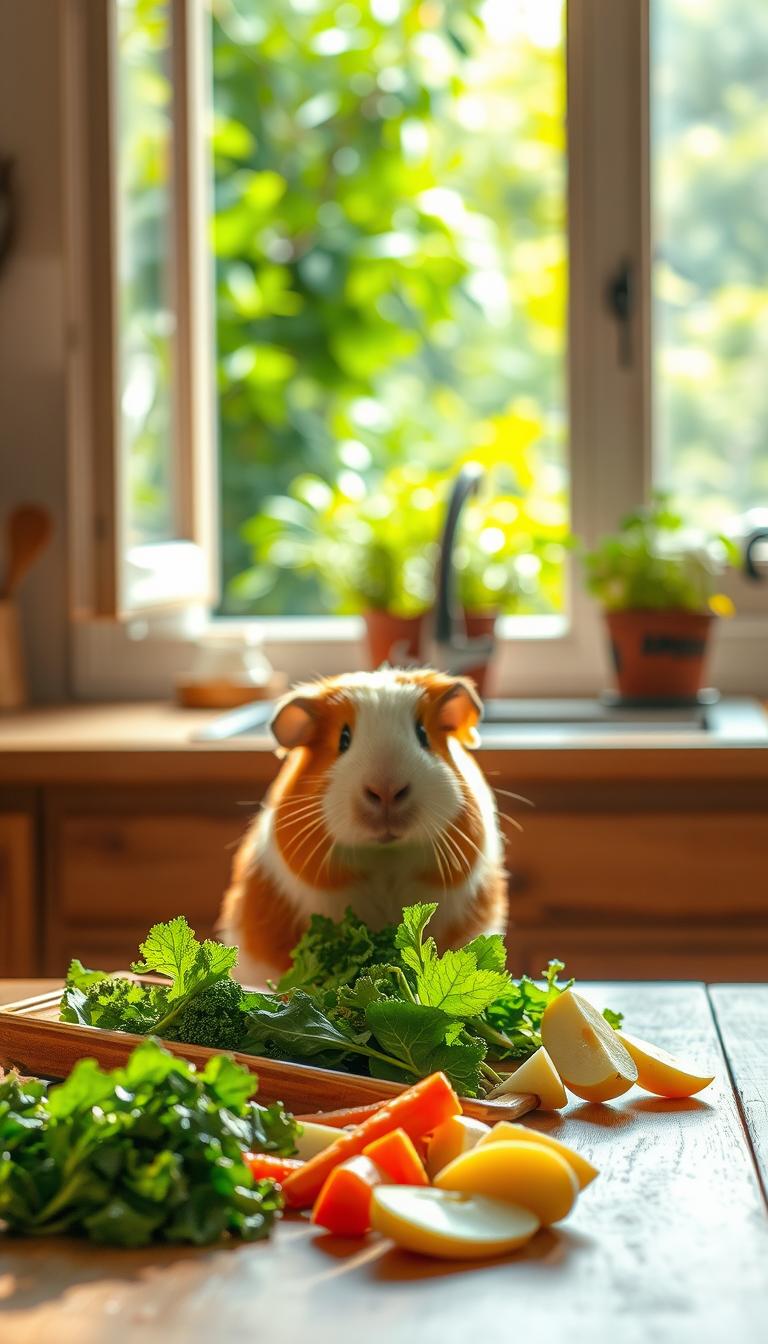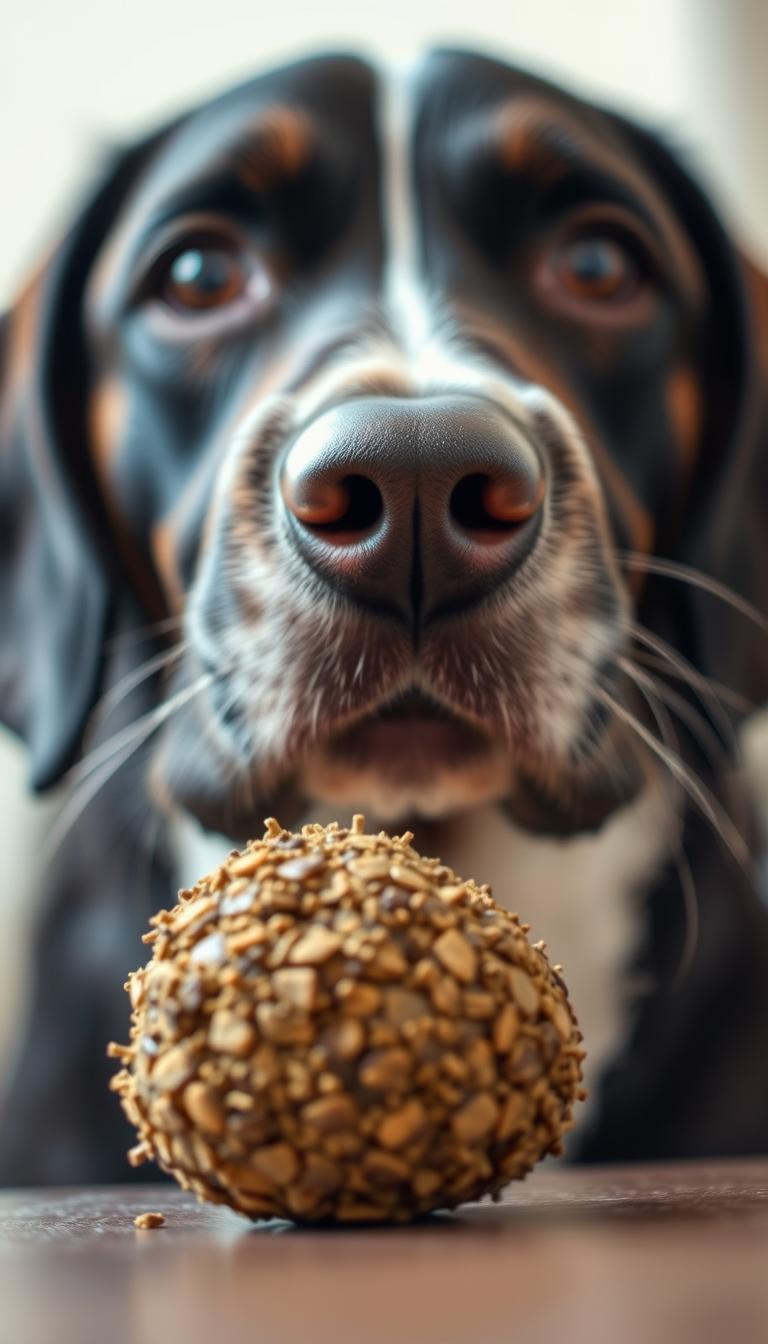Many rodent enthusiasts wonder about mixing small pets in shared habitats. While the idea might seem practical, distinct species like hamsters and mice face serious challenges when housed together. Experts like Christine from Crittery Exotics emphasize these animals have incompatible needs and behaviors that make cohabitation risky.
One critical issue involves their natural instincts. Hamsters often view mice as prey rather than companions, sometimes targeting their tails. Dietary differences also create problems – what nourishes one species could harm another. These factors make cross-species bonding biologically impractical.
Responsible pet ownership means recognizing that rodents thrive best with their own kind. While curiosity about interspecies interactions is natural, forcing incompatible animals together stresses both parties. Their evolutionary paths have shaped unique communication styles and social structures that don’t align.
This guide explores why pairing these creatures fails biologically and ethically. You’ll learn safer alternatives for keeping multiple pets while respecting each animal’s needs. Discover practical solutions that prioritize welfare over experimentation, ensuring your furry friends live happy, stress-free lives.
Table of Contents
Understanding Rodent Breeding Basics

Exploring the world of small pets reveals why certain animals thrive together while others clash. Hamsters occupy distinct biological categories compared to mice, with 19 unique species across seven genera. Their evolutionary paths shaped specialized traits, from cheek pouches for food storage to solitary lifestyles in wild habitats.
Species Overview and Natural Habits
Syrian hamsters dominate the pet scene, but their wild cousins display diverse behaviors. These rodents naturally gather seeds and vegetation during twilight hours. In captivity, they adapt to nighttime activity, contrasting with mice’s more flexible schedules.
Diets also vary significantly. While both eat plant-based foods, hamsters require specific nutrient balances. Offering the wrong food types risks digestive issues or malnutrition – a key reason mixing species proves problematic.
Key Factors in Breeding Success
Successful pairings depend on matching genetic backgrounds and social needs. Syrian varieties prefer solitude, while dwarf types tolerate limited company. Even within the same species, size differences or incompatible temperaments can derail breeding efforts.
Creating ideal environments matters too. Temperature, hiding spaces, and nesting materials all influence outcomes. Remember: forcing cross-species interactions ignores millions of years of evolved behavior. Stick to same-species pairs for healthy, stress-free pets.
Differences Between Hamsters and Mice in Reproduction
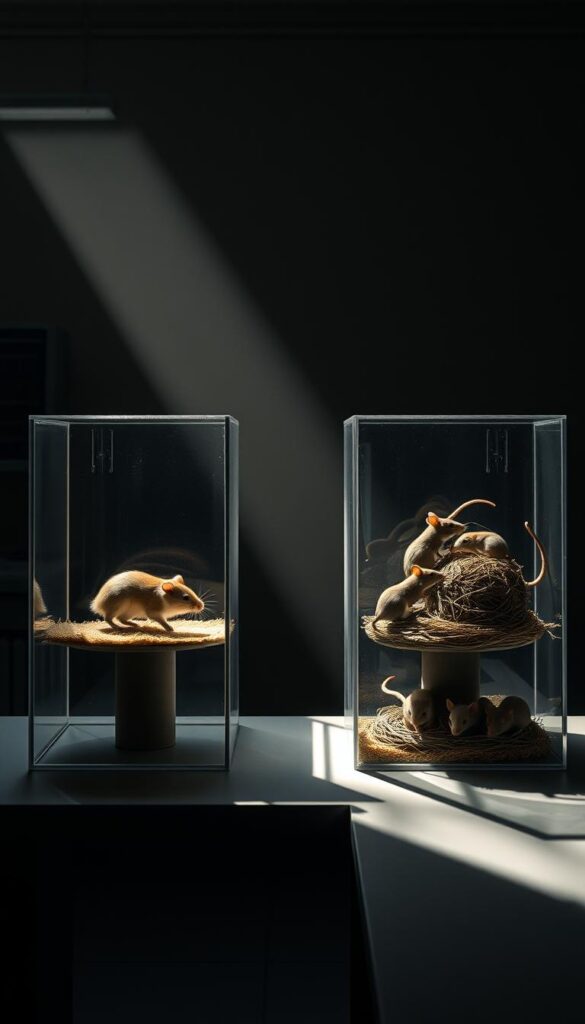
Rodent reproduction reveals fascinating contrasts between species. While both animals share similar classifications, their mating systems evolved along separate paths. These distinctions create insurmountable barriers for cross-species interactions.
Physical and Behavioral Distinctions
Body structures tell the first chapter of this story. A hamster’s stout frame contrasts sharply with a mouse’s slender profile. Their tails alone highlight this mismatch – yours might measure just 1/6th of its body length, while a mouse’s equals its full torso size.
Males show particularly striking differences. Those large reproductive organs make physical pairing mechanically improbable. Females display visible readiness cues too – a trim tail line versus the male’s bulging silhouette when viewed from above.
Genetic and Environmental Influences
Millions of years apart created genetic roadblocks. Chromosome counts and DNA sequences diverge too widely for viable offspring. Even if mating occurred, cellular recognition mechanisms would fail during fertilization.
Environmental needs further complicate matters. Temperature preferences and seasonal breeding triggers vary dramatically. What signals readiness in one species leaves the other completely uninterested.
Can Hamsters And Mice Breed: Risks and Challenges
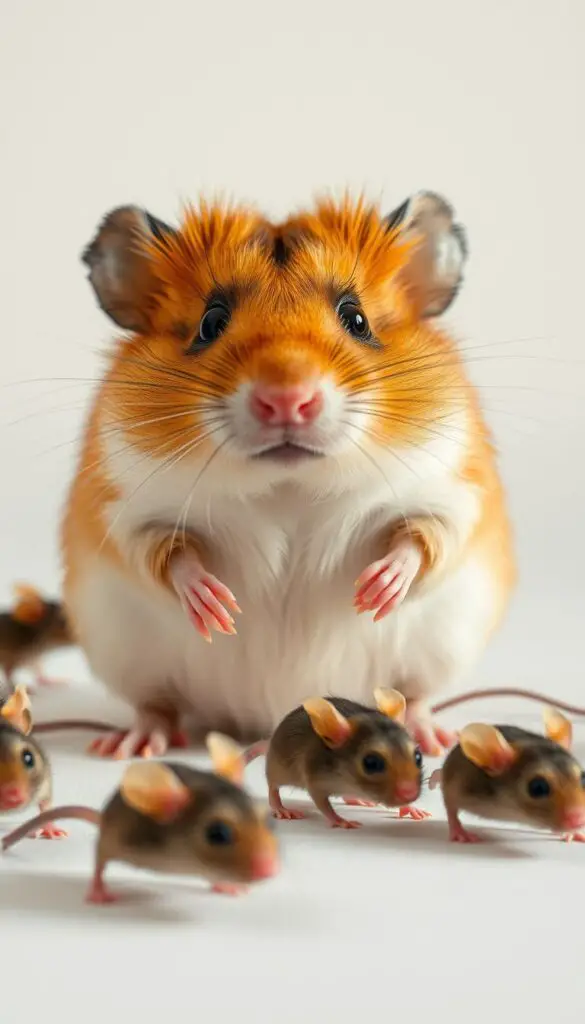
Mixing rodent species might seem harmless, but pairing certain animals invites disaster. Housing these furry friends together creates multiple threats that owners often underestimate. From violent encounters to silent stressors, the consequences can be severe.
Health Implications and Genetic Considerations
One startling fact stands out: hamsters view mouse tails as irresistible chew toys. Christine from Crittery Exotics confirms this dangerous fixation, noting:
“We’ve seen cases where a mouse’s entire tail gets gnawed off within hours. The injuries often lead to infections or fatal blood loss.”
This isn’t random aggression – it’s instinctual behavior hardwired over generations.
Nutritional mismatches compound the danger. Foods perfect for one species might lack vital nutrients for the other. For example, mouse diets often include ingredients that upset hamster digestion. Sharing meals becomes a health gamble rather than a bonding opportunity.
Stress from forced cohabitation weakens immune systems over time. Even without visible fights, animals may develop hair loss, digestive troubles, or abnormal behaviors. Their bodies simply aren’t built to handle cross-species company long-term.
Genetically, these rodents exist in separate biological universes. Chromosomal differences make breeding attempts biologically futile. Any mating efforts would stress females without producing viable offspring – a risk no responsible pet owner should take.
Creating a Safe Breeding Environment for Your Pet Rodents
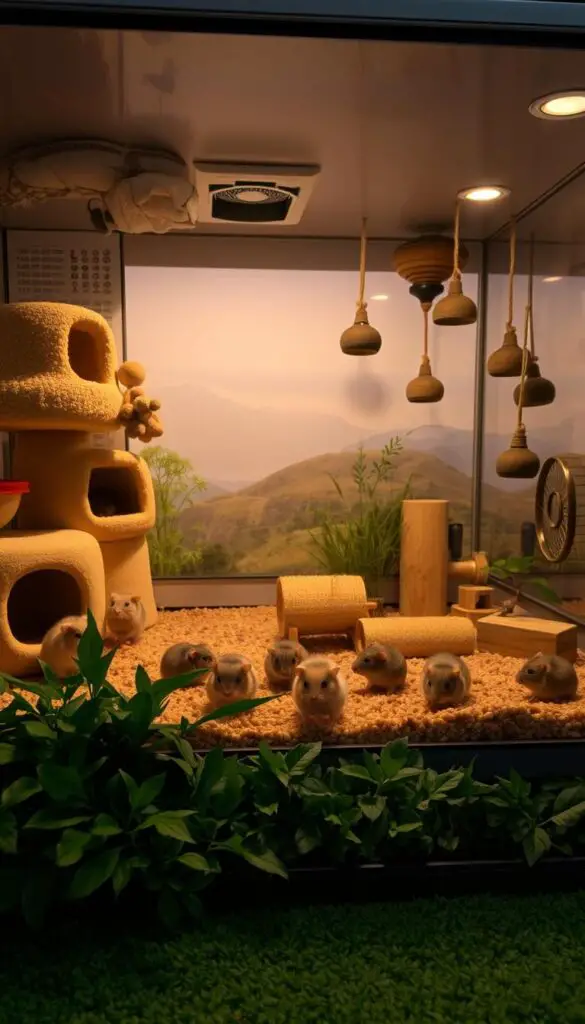
Setting up a nurturing space for small companions requires attention to detail. Rodent parents must balance practical needs with biological rhythms to support healthy development. Let’s explore how to craft habitats and routines that respect their natural cycles.
Proper Cage and Habitat Setup
Space matters when designing living quarters. Syrian varieties need at least 24×12-inch enclosures with chew-proof materials. Include paper-based bedding layers for burrowing – avoid cedar shavings that irritate sensitive respiratory systems.
Maintain 65-75°F temperatures using thermostat-controlled heating pads. Separate males and females by 4-5 weeks old for Syrian types to prevent surprise litters. Remember: a 16-18 day gestation period means quick turnarounds between potential pregnancies.
Nutrition and Day-to-Day Care Tips
Boost protein intake during breeding phases with mealworms or cooked eggs. Pregnant females need constant access to fresh water – dehydration risks increase dramatically in late-stage pregnancies. Watch for nest-building behaviors signaling impending births.
Post-delivery care requires patience. Limit cage cleaning for 2-3 weeks after birth to avoid stressing new mothers. Use silent exercise wheels to prevent noise disturbances during critical bonding periods.
Track age-related changes closely. With most living just 2-3 years, schedule breeding attempts before the 12-month mark for optimal health outcomes. Adjust portion sizes as activity levels shift through different life stages.
Expert Insights and Real-Life Examples
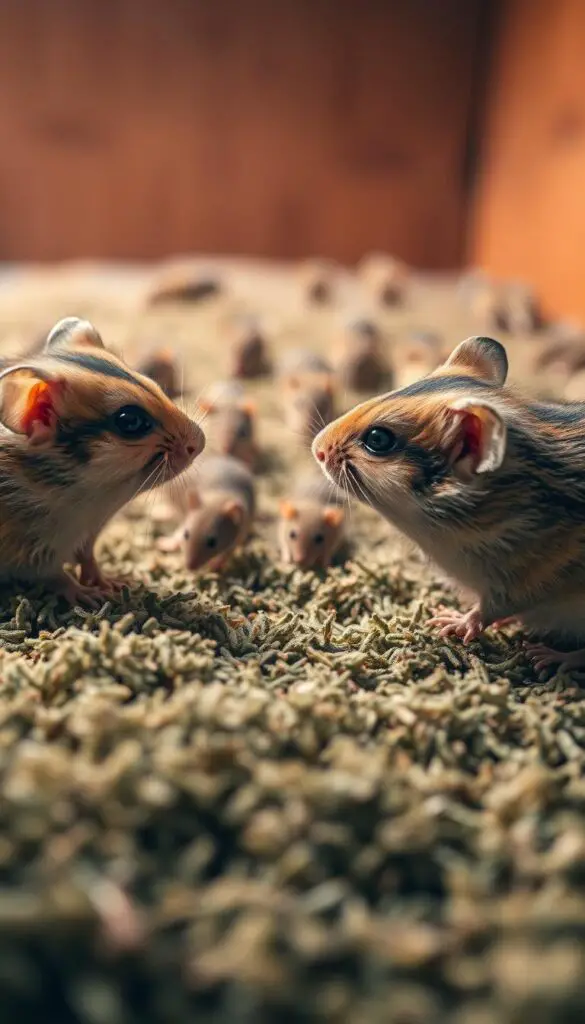
Real-world experiences shed light on rodent cohabitation challenges. While some success stories exist, they require professional expertise and constant vigilance. Let’s explore practical lessons from seasoned caretakers.
Case Study: Crittery Exotics’ Experience
Christine’s multi-species mouse enclosure shows both possibilities and limits. Her Zebra Mouse Linus thrived with Multimammate companions after showing signs of loneliness. Key factors included gradual introductions and 24/7 monitoring systems. Even then, adding Charlie the fancy mouse took three weeks of scent-swapping and neutral territory meetings.
She clarifies:
“This approach works only with closely related mouse varieties. Never attempt it with hamsters – their instincts override any socialization efforts.”
Understanding Social Dynamics Among Rodents
Rodent communication relies heavily on species-specific cues. Mice use ultrasonic vocalizations undetectable to hamsters, while scent markings from one group might trigger aggression in another. These invisible barriers explain why forced cohabitation often fails.
Multimammate mice adapt better to mixed groups due to flexible hierarchies. However, most rodents – especially solitary ones like Syrians – view others as rivals or prey. Nighttime activity spikes heighten risks when animals can’t interpret each other’s movements.
Responsible owners prioritize safety over curiosity. Separate habitats prevent stress-related illnesses and injuries. Remember: successful interspecies pairs in zoos involve experts with emergency protocols – not typical home setups.
Final Thoughts on Responsible Rodent Care
Caring for small pets means understanding their unique needs. Syrian hamsters thrive as solitary creatures – their two-to-three-year lifespan in captivity demands individual housing. Trying to pair them with social mice ignores their natural instincts, leading to stress or injury.
While dwarf hamsters might occasionally tolerate same-gender siblings, this flexibility never applies across species. Separate habitats prevent territorial disputes and ensure proper nutrition. Mice require different diets and social structures that clash with hamster behavior.
Create stress-free environments by focusing on species-specific care. Provide ample space, appropriate bedding, and tailored food options. Remember: peaceful cohabitation starts with respecting biological boundaries. Your furry friends will thank you with lively personalities and healthy habits.
Responsible ownership means prioritizing welfare over curiosity. Choose companions that match your pet’s needs rather than forcing unnatural partnerships. With thoughtful planning, you’ll create joyful homes where each animal flourishes.

